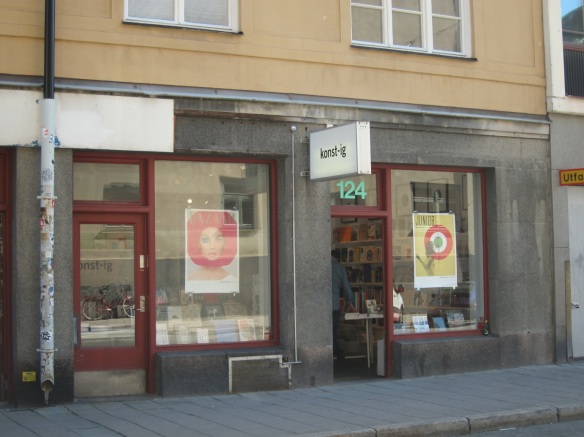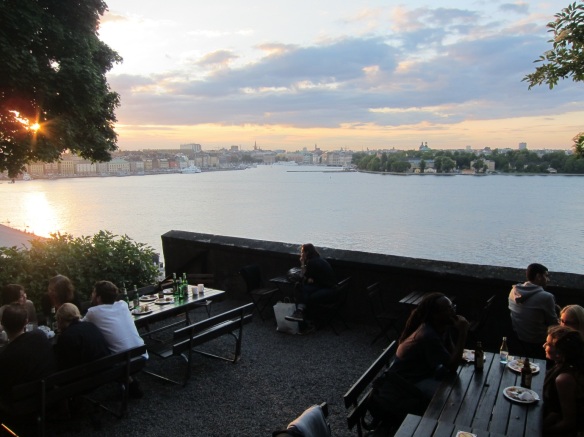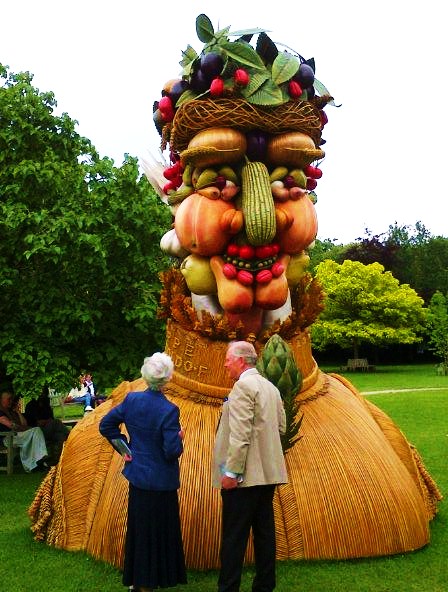
Deputy Editor Freya Gosling heads over to Battersea Arts Centre to join Leo Kay and Anna Smith performing their latest production ‘Only Wolves and Lions’. Red red wine, cooking, eating, music, dancing and discussion were all up for grabs during this very special evening.

Very rarely does one get the chance to munch down delicious hot food during a theatre performance…. unlike during a screening at Peckham Plex Cinema, it is frowned upon to devour nachos during a Pinter play at the National. However, theatre company Unfinished Business’ latest creation ‘Only Wolves and Lions’ is a whole different kettle of fish/meat/expansive vegetarian options. In the company’s most recent production, the preparing, cooking and eating of food as a group is at the centre of the whole performance- as well as the discussion that food and (good) wine brings with it.
Leo Kay’s production brings together a group of individuals; asks that each person brings along an raw ingredient, and invites them to share in the unique experience that is meeting and creating something to eat together as a collection of relative strangers.
Having umm-ed and ahh-ed about what ingredient to take for over a week, I plumped for plantain; a versatile ingredient used in many different cultures for many years…. and one I had never cooked with before. I did not even know how to identify a ripe one, to the wry amusement of the sales assistant in one of the grocer’s on Peckham Rye High Street. So, clutching a bag filled to the brim with strange fruit/veg that I had no idea what to do with I waited for the other members of the audience to arrive. They arrived in dribs and drabs of varying states of lateness (true to form with an arts event) and far from being intimidating and ultra-cool, everyone seemed excited, nervous and each clutching carrier bags with their own ingredients. A small amount of nosey-ing about each others choices went on, along with some laughter and raised eyebrows (I had no cause to be superior about my plantain… what even is it?!) until we were ushered upstairs into the Member’s Bar of the BAC. Here we were asked by Leo Kay and Unai Lopez de Armentia, who were leading the event, to queue up, introduce ourselves and each present the ingredient we had chosen for the evening’s performance.
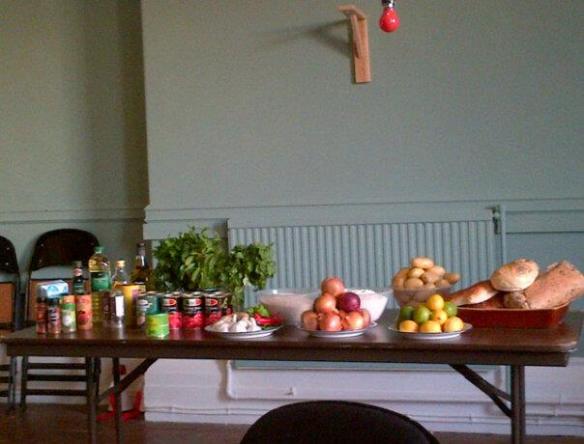
Laid out before us was a huge table, complete with chairs that had clean white aprons laid over them, water jugs and glasses. On smaller tables dotted around the room were cooking stations with hobs and cooking equipment, and at the other end of the room was a table laden with basic ingredients: onions, garlic, tinned tomatoes, herbs, spices and different breads. This excited me instantly, having not been sure how much of the performance would be actually cooking- or to what degree the show was metaphorical when it spoke of cooking. I was not to be disappointed however…
The evening began with wine and several elaborate toasts to the evening ahead, happiness and general well-being. This was perfectly within everyone’s comfort zone, and there was much chinking of glass and swigging of surprisingly delectable wine. More ambivalent glances were exchanged when we were asked to stand, impersonate monkeys, shake our booties and catch the eye of other individuals in the room that you would mate with if you were a monkey with more primal instincts than cooking and toasting with wine! However, it could not be denied that these icebreaker techniques were a total success, as everyone was flushed and giggling afterwards, all pretence of aloof politeness shattered.
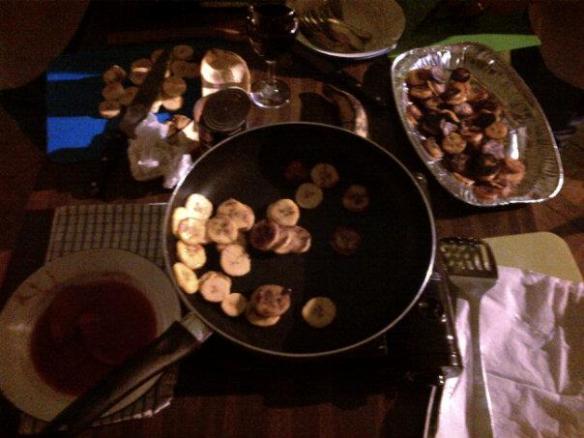
The group was subsequently asked to split into smaller groups of three or four, and given three minutes to examine all of the ingredients we had before us on the table, and come up with as many recipes as we could, using as many or as little of what we had available. After a flurry of tipsy group-forming we discussed food, our group deciding on guacamole, bruschetta, apsaragus and mint ristotto, and fried plantain with spicy salsa. All ideas were eventually brought together and Leo and Unai shocked us all by agreeing that we would try and cook every single dish the groups had come up with in forty minutes, adding to our list aubergine curry, sweet potato tagine, pan-fried chorizo, warm green salad,spicy kale, and cob nuts.
The next forty minutes were spent in a delightful rush of great smells, flavours, sounds from the mixed playlist that was playing while we cooked, and working as a united whole. Discussion ebbed and flowed as we concentrated on the task ahead but interest in each other’s cooking took over, with people drifting from station to station sampling one another’s dishes as they were created (my fried plantain being a popular choice as it was quick to cook and everyone was becoming ravenous!)
Finally, time was up and we all sat, sauce-splattered and very eager to eat the magnificent spread before us. Leo and Unai once again gently led discussion with another toast, and by asking us what we had named our dishes. (I went for Peckham Surprise, because I truly had not known what the outcome was going to be of my dish!) It was remarkable how quickly audience and performance directors relaxed into this unfamiliar ‘scene’, as after this initial encouragement from the members of the company, the group really began to talk to one another. As the tension subsided, a great deal of laughter, debate and flirting went on, as we really got to know one another- Leo and Unai acting as mediators to the discussions at hand. Food, relationships, family, friendship and politics were all covered in varying degrees, and the sharing of so many great dishes were a welcome accompaniment to the ebbs and flows of conversation.

I really admired the spirit of Leo’s work, because it is true that I as an individual don’t often get the chance to cook and share a meal with fifteen other people and bounce off their moods and spirits. Working a job with unsociable hours often leads to eating alone, in snatched moments between shifts or in the small hours of the morning after work. I don’t think one can appreciate the difference it makes to eat with others until you have that luxury, and then later do not. The next week, we had a lively dinner party with friends of the family for my mother’s birthday, who stated after the meal (and several times since) ‘That was just great, we should do it more often’ as the evening had been so elated and enjoyable. I hope the tradition will continue over the next coming weeks, and for years afterwards!
This kind of reaction is what I believe Leo is trying to highlight through these performances, and his others like it; we as members of society thrive from these social gatherings, as it is in human nature to be around others, especially during times of creativity, exploration and when satisfying those primal instincts like feeding and interracting. ‘Only Wolves’ really taps into said issues, and the whole experience is both great fun and socially revealing. I am sure I am not the only one who is excited to see where these guys will take the project next after such a successful reaction in London.
From November, ‘Only Wolves and Lions’ will move to Reading where it will feature as part of the Sitelines Festival in the South Street Arts Centre.
http://thisisunfinished.wordpress.com/only-wolves-and-lions-2/
http://thisisunfinished.wordpress.com/
http://www.madrugada.info/

 With over two hundred works spanning across painting, sculpture, furniture and wallpaper, the Pre-Raphaelite exhibition at Tate Britain is something to contend with. The group of artists, writers and poets are frequently associated with their personification of beauty but here the curators are arguing that the brotherhood were also radicals, innovative inventors that led the first British modern art movement. Although the stunning red headed women that frequent the canvases are present throughout, the exhibition is split into additional themes including Nature, Salvation and Mythology.
With over two hundred works spanning across painting, sculpture, furniture and wallpaper, the Pre-Raphaelite exhibition at Tate Britain is something to contend with. The group of artists, writers and poets are frequently associated with their personification of beauty but here the curators are arguing that the brotherhood were also radicals, innovative inventors that led the first British modern art movement. Although the stunning red headed women that frequent the canvases are present throughout, the exhibition is split into additional themes including Nature, Salvation and Mythology. However, the Pre-Raphaelites were painting at the same time as Karl Marx was writing. In 1848, when the brotherhood formed, Marx and Friedrich Engels has published the Communist Manifesto. It might be a little far fetched to suggest the group were modern artists, but they did share revolutionary ideals. They made pyscho-drama of Victorian society and mocked the hypocrisy of the age. Their blatant approach to female sexuality was forward thinking. Millais’ 1851 painting of Mariana shows a woman locked in the Vicarage and longing for something far more satisfying.
However, the Pre-Raphaelites were painting at the same time as Karl Marx was writing. In 1848, when the brotherhood formed, Marx and Friedrich Engels has published the Communist Manifesto. It might be a little far fetched to suggest the group were modern artists, but they did share revolutionary ideals. They made pyscho-drama of Victorian society and mocked the hypocrisy of the age. Their blatant approach to female sexuality was forward thinking. Millais’ 1851 painting of Mariana shows a woman locked in the Vicarage and longing for something far more satisfying.








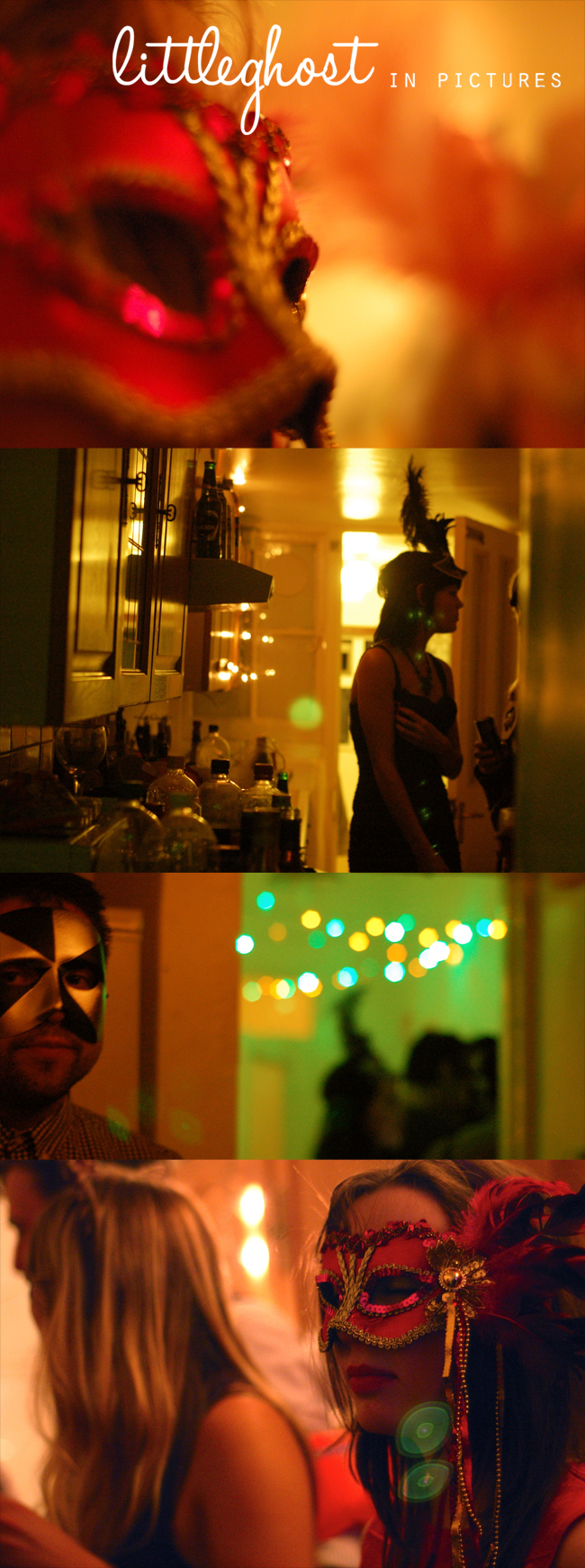



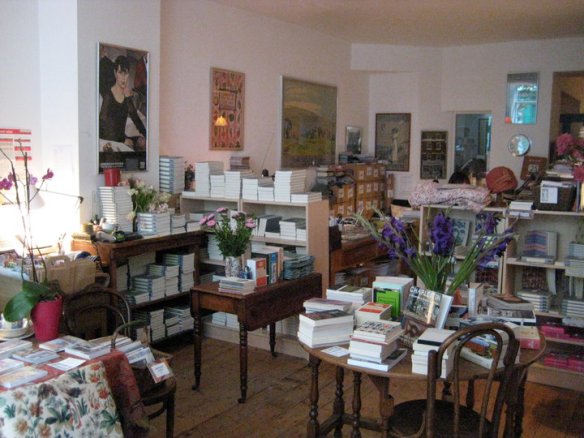

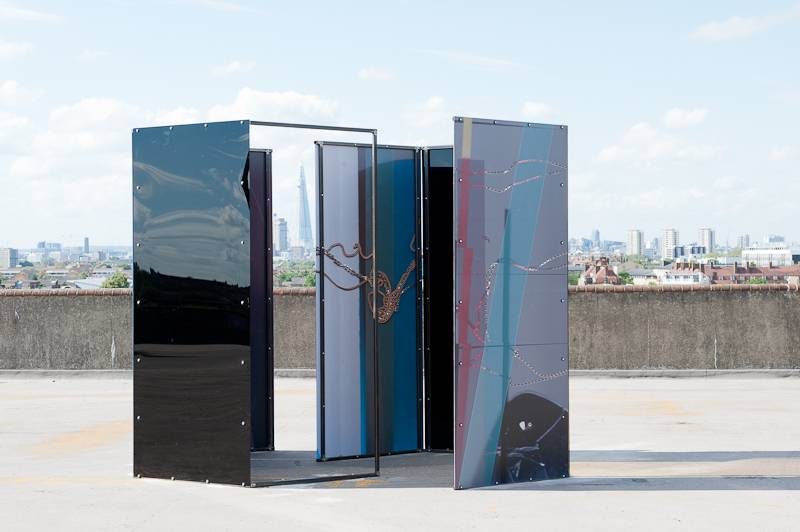 In the unlikely setting of a multistorey carpark on Rye Lane, Peckham, is the most amazing sculpture park you are ever likely to visit. I know, bold statement, right? But this is a bold statement for project that is successfully altering, if not changing, the way in which we view contemporary, public art. Bold Tendencies, now in its sixth and biggest year, is a non-profit, summer sculpture park that brings together emerging international artists and provides them with a platform that catapults into public consciousness.
In the unlikely setting of a multistorey carpark on Rye Lane, Peckham, is the most amazing sculpture park you are ever likely to visit. I know, bold statement, right? But this is a bold statement for project that is successfully altering, if not changing, the way in which we view contemporary, public art. Bold Tendencies, now in its sixth and biggest year, is a non-profit, summer sculpture park that brings together emerging international artists and provides them with a platform that catapults into public consciousness.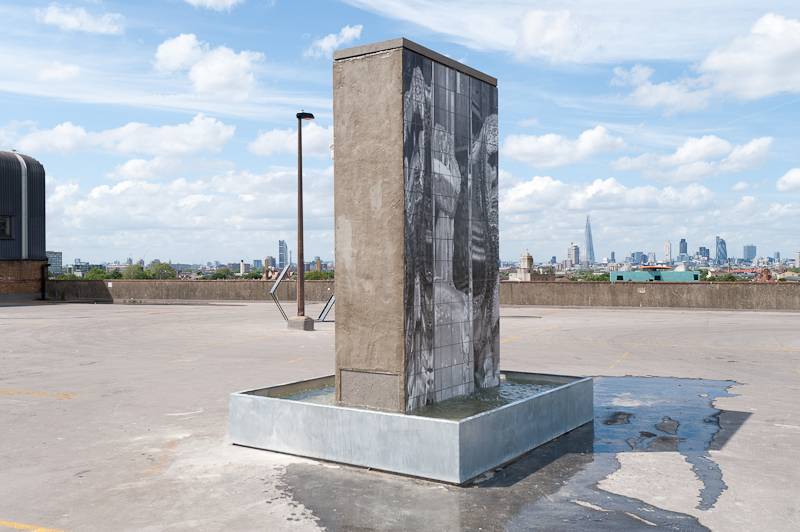
 The location of the project is intrinsically connected with the artwork it includes. Speaking to the artist Mary Redmond, the industrial nature of the space is vital to the experience of her work. The piece, Seven Split Overglide, combines bamboo and plasticised organic shapes with scrap metal that appears to have been blown in from across the neighboring railroad. Redmond explains that the piece has been inspired by the Glaswegian tower blocks and Le Corbusier styled buildings she used to live near as a child. As we speak, a train rushes by and dust, grit and hot air is blown through the space forcing the scrap metal and fake flowers in her work to tremble. This wind tunnel effect, says Redmond, is akin to that created in the towerblock carparks she would walk through as a child.
The location of the project is intrinsically connected with the artwork it includes. Speaking to the artist Mary Redmond, the industrial nature of the space is vital to the experience of her work. The piece, Seven Split Overglide, combines bamboo and plasticised organic shapes with scrap metal that appears to have been blown in from across the neighboring railroad. Redmond explains that the piece has been inspired by the Glaswegian tower blocks and Le Corbusier styled buildings she used to live near as a child. As we speak, a train rushes by and dust, grit and hot air is blown through the space forcing the scrap metal and fake flowers in her work to tremble. This wind tunnel effect, says Redmond, is akin to that created in the towerblock carparks she would walk through as a child. We know we’ve been unusually quiet this month, we’ve been busy bees (and the site had a few minor technical errors that put us out of action for a while) but we have lots coming up. We’ve been to the Bold Tendencies launch party in Peckham (which was, without a doubt, the busiest launch we have ever been to) and have been knee deep in mud at Latitude Festival. Reviews of both coming up shortly. There has also been a graduation, a trip to Stockholm and a new job so THAT is why we’ve been quiet. Lots coming up in July. Check back soon you lovely people. Thanks again. x
We know we’ve been unusually quiet this month, we’ve been busy bees (and the site had a few minor technical errors that put us out of action for a while) but we have lots coming up. We’ve been to the Bold Tendencies launch party in Peckham (which was, without a doubt, the busiest launch we have ever been to) and have been knee deep in mud at Latitude Festival. Reviews of both coming up shortly. There has also been a graduation, a trip to Stockholm and a new job so THAT is why we’ve been quiet. Lots coming up in July. Check back soon you lovely people. Thanks again. x

